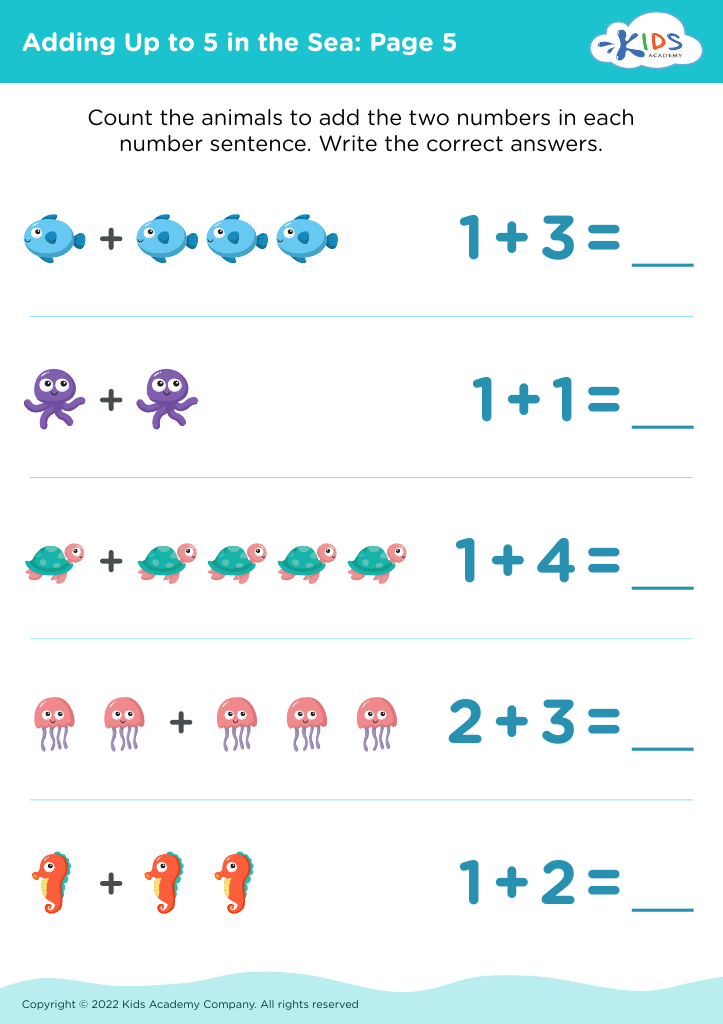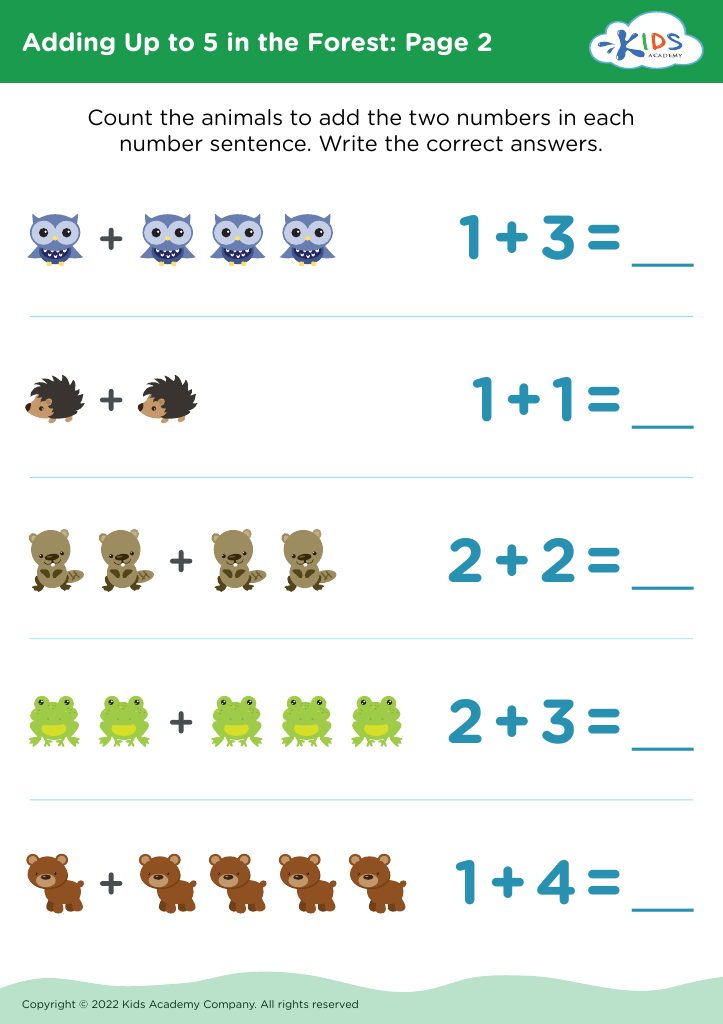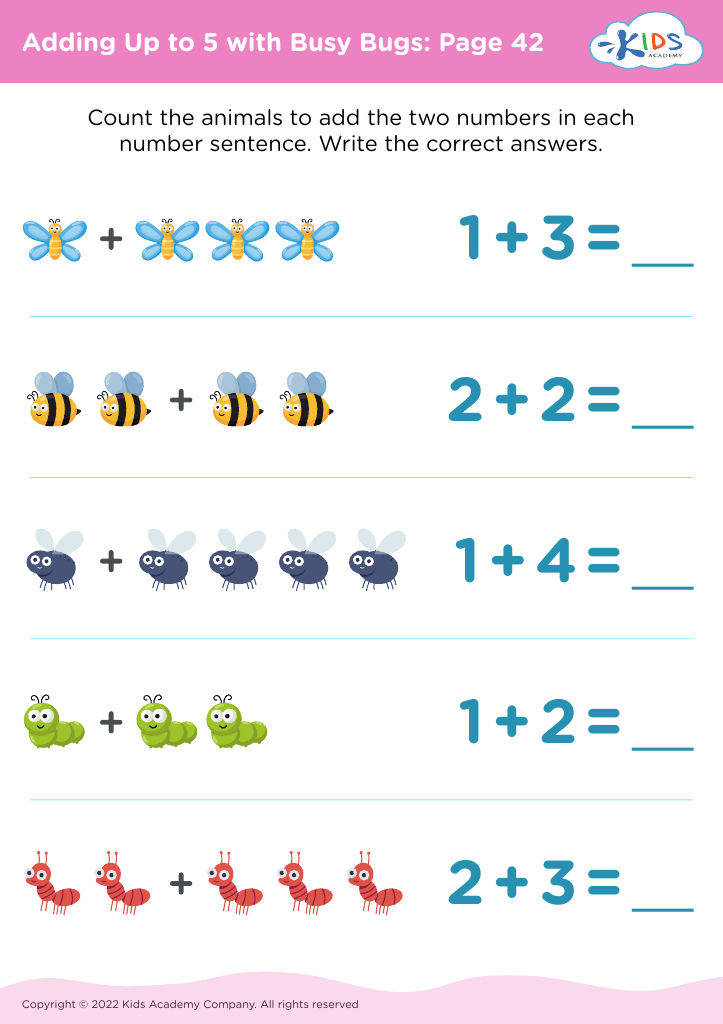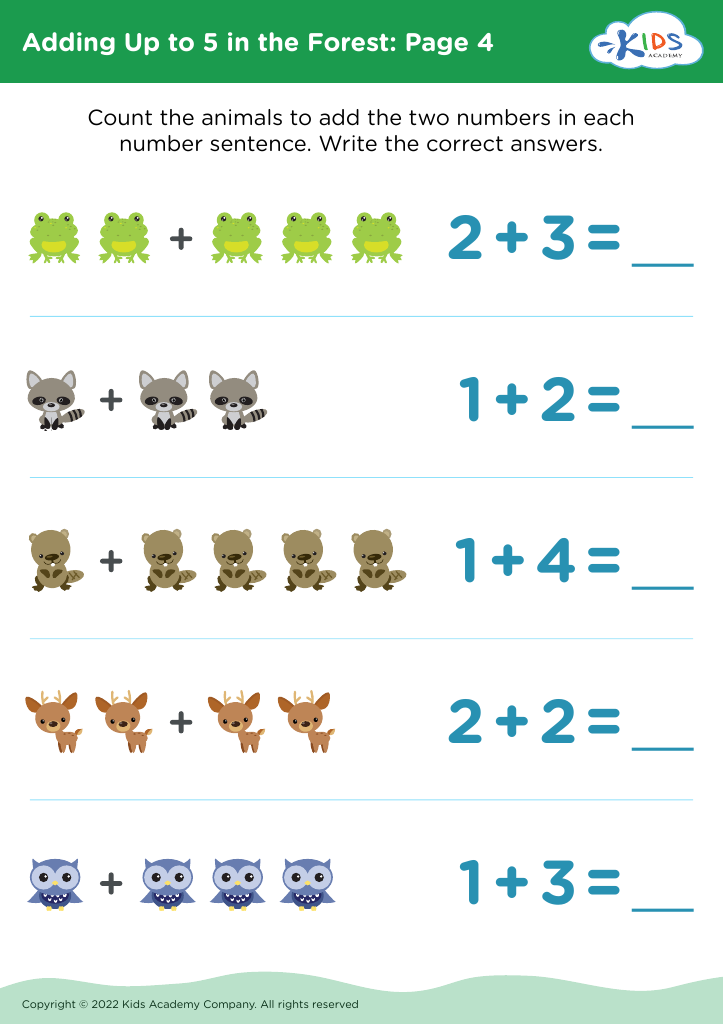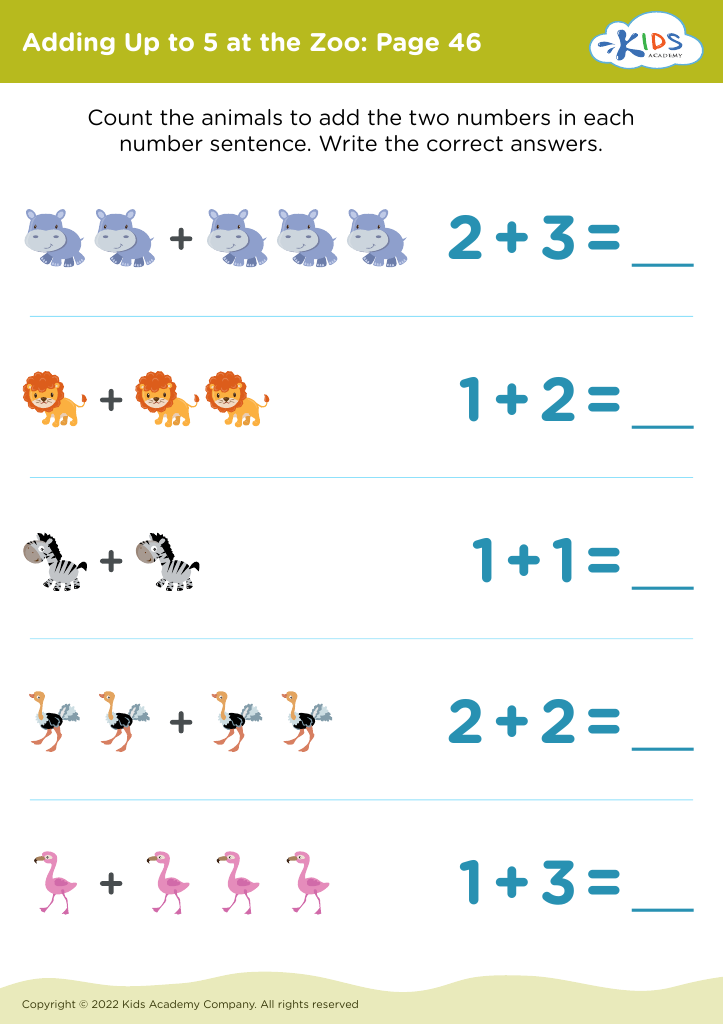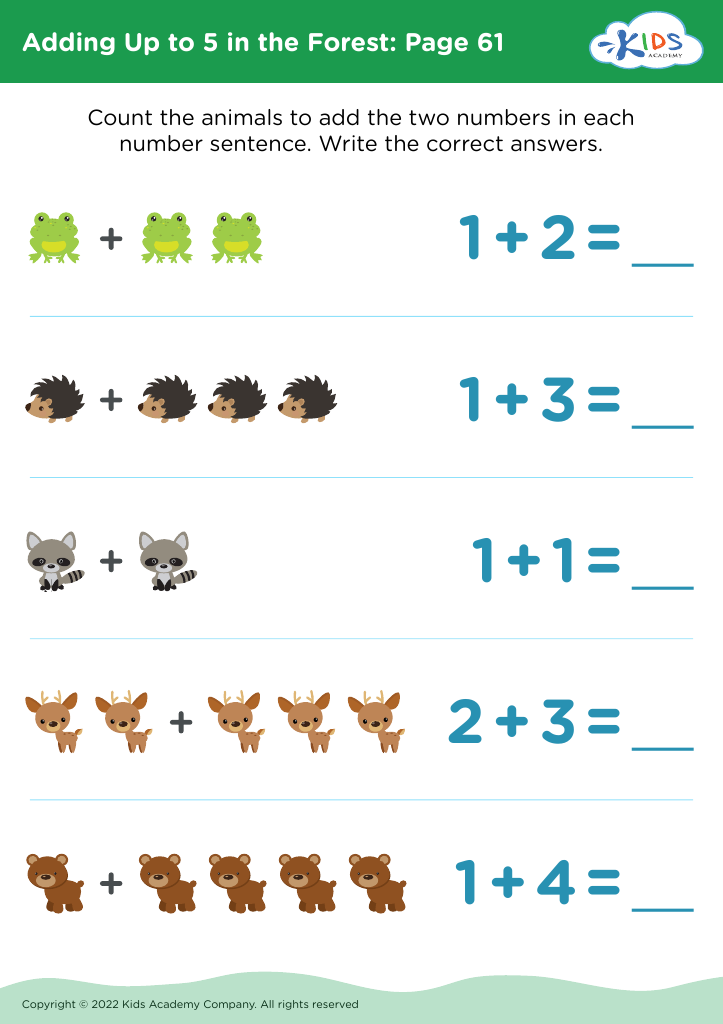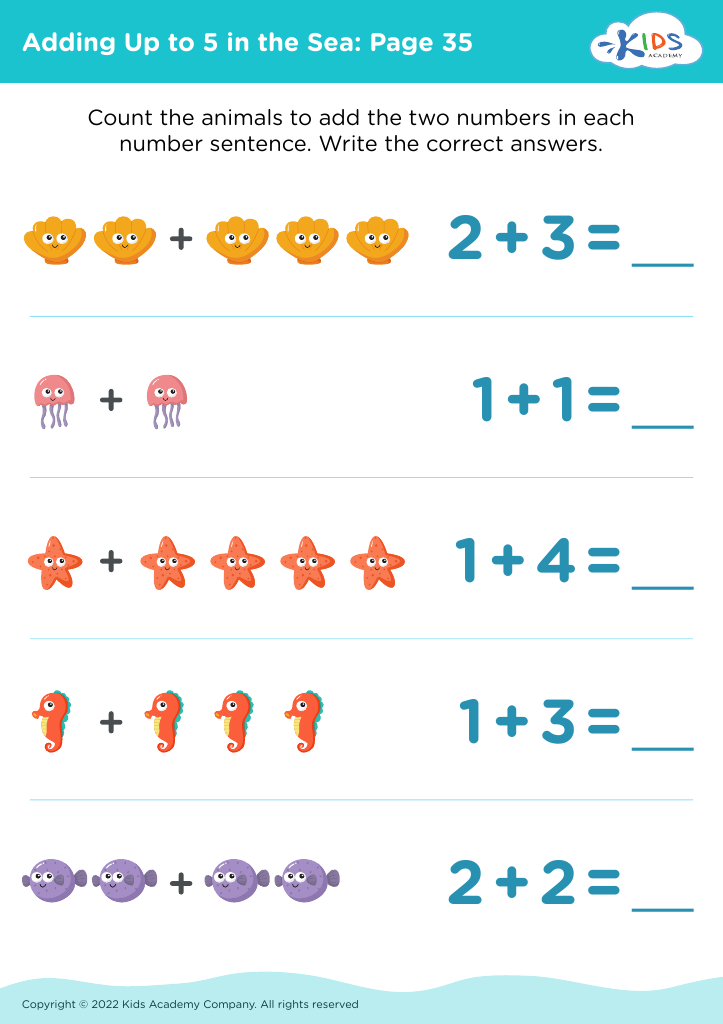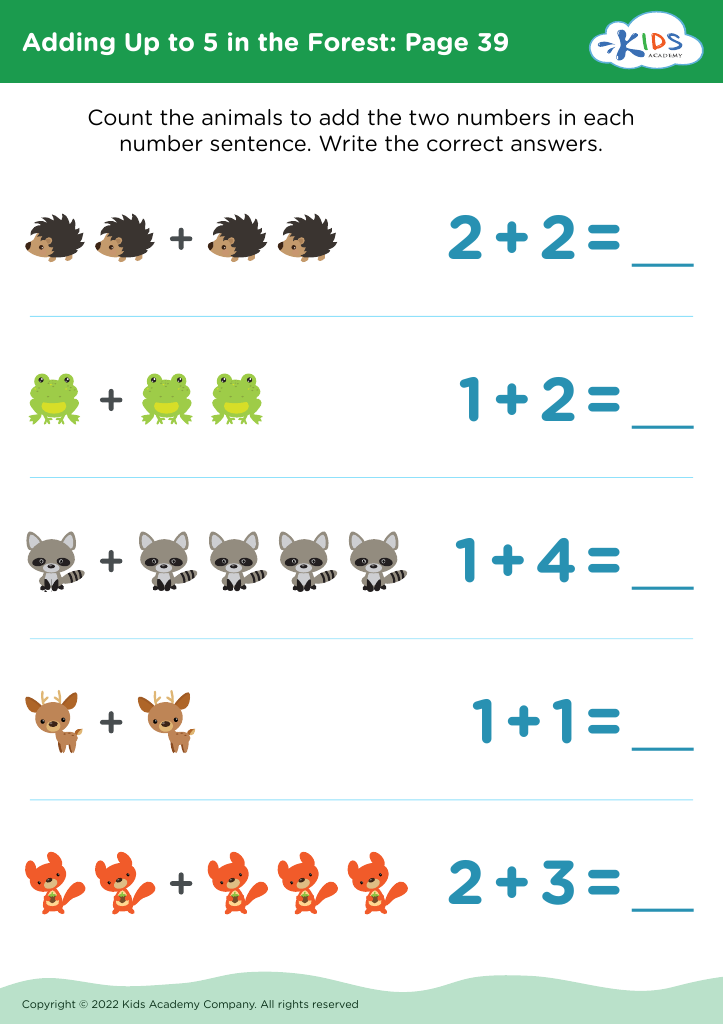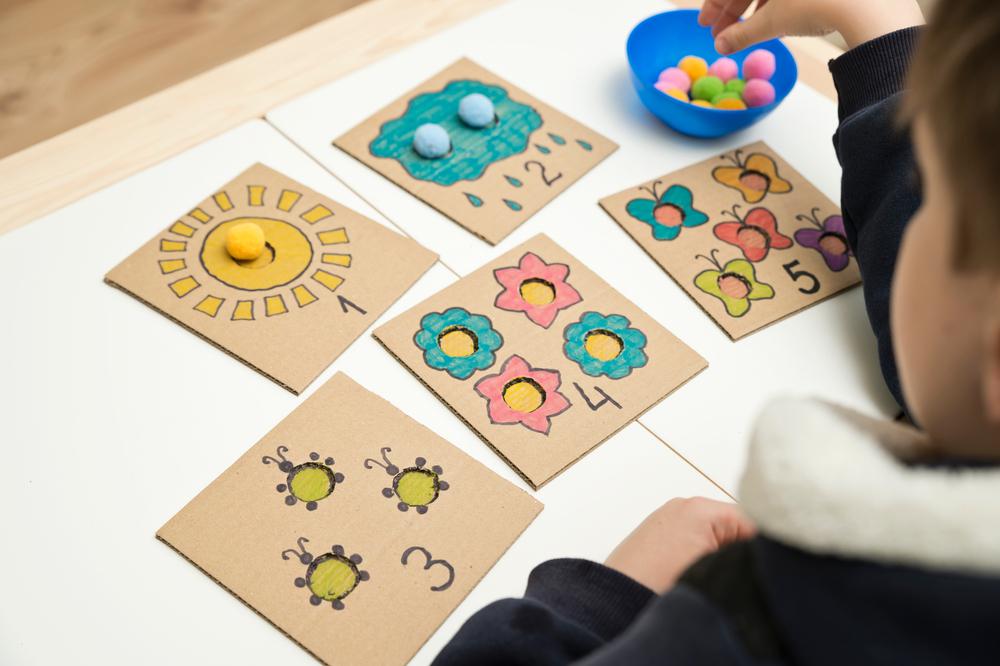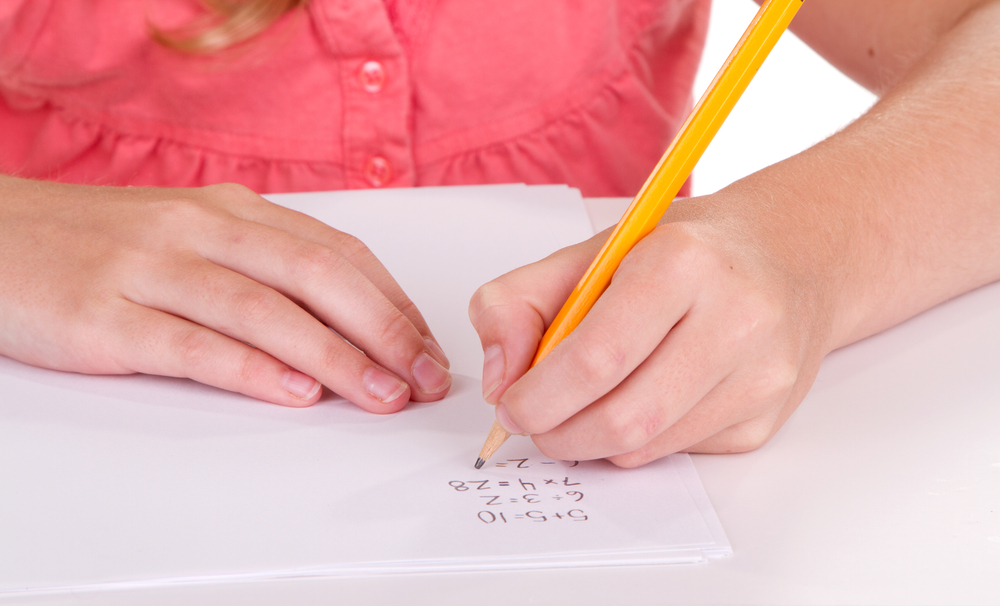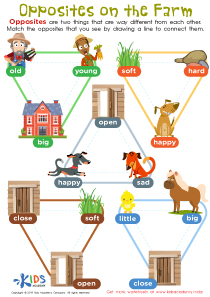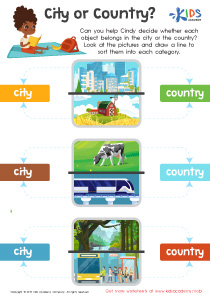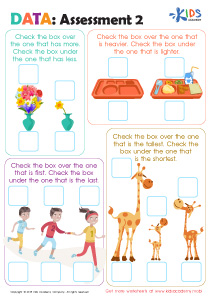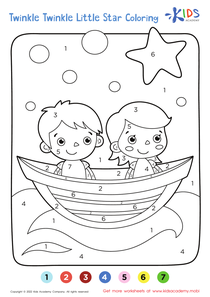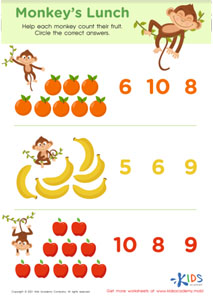Visual perception Addition & Subtraction Worksheets for Ages 4-5
14 filtered results
-
From - To
Discover our engaging Visual Perception Addition & Subtraction Worksheets designed specifically for children ages 4-5. These creative activities help young learners build essential math skills while enhancing their visual perception. Through vibrant illustrations and playful designs, children will practice counting, recognizing numbers, and solving simple addition and subtraction problems. Our worksheets encourage motor skills development and cognitive growth, making math fun and interactive. Perfect for parents and educators, these resources can be used in various learning settings. Foster a love for math in your child and watch them confidently master fundamental concepts with our engaging worksheets! Explore the joy of learning today!
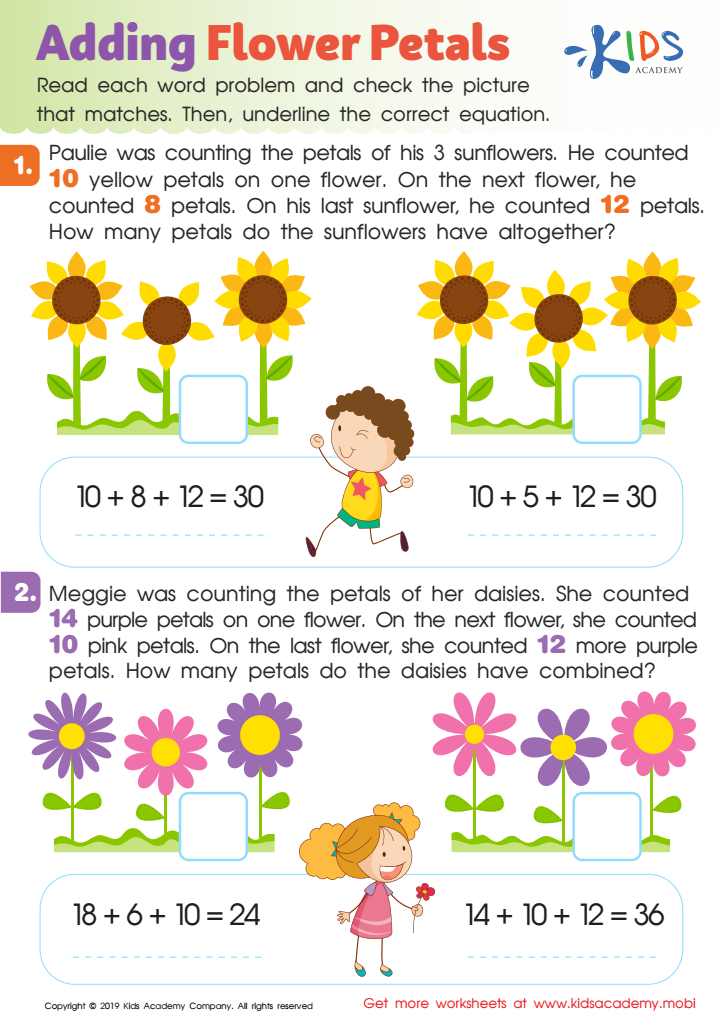

Adding Flower Petals Worksheet
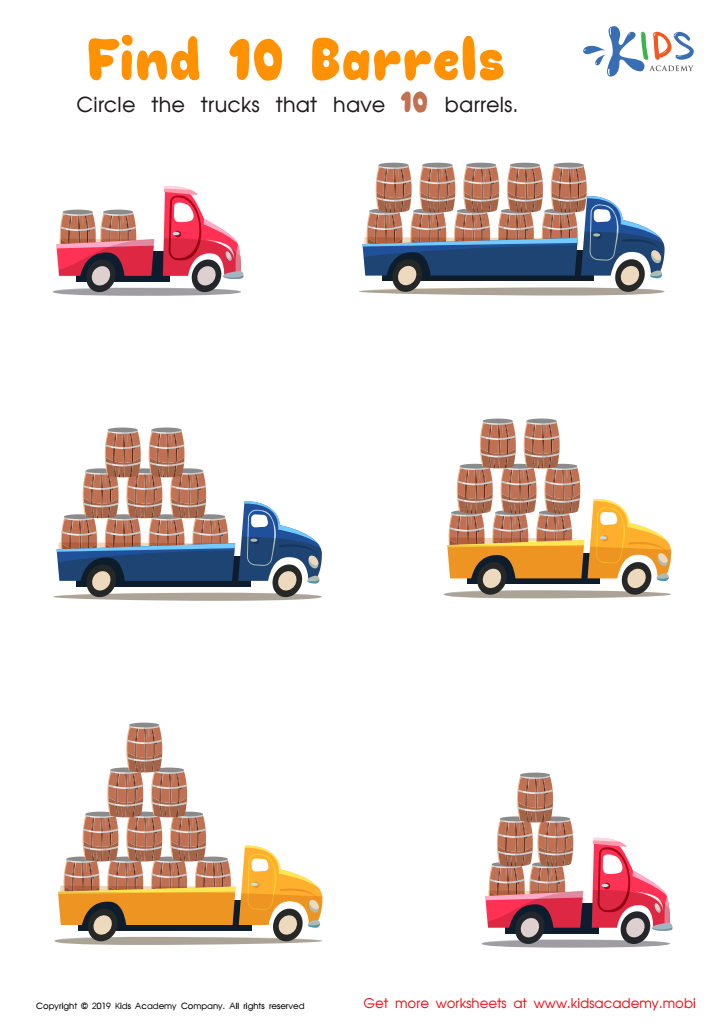

Find 10 Barrels Worksheet
Visual perception skills are foundational for effective learning, particularly in subjects like mathematics, where concepts such as addition and subtraction require children to analyze and interpret visual information. For parents and teachers of children aged 4-5, fostering strong visual perception is crucial, as it directly influences a child’s ability to recognize numbers, patterns, and spatial relationships.
At this developmental stage, children are not only acquiring basic number concepts but also building critical thinking skills. Visual perception allows them to visually assess quantities, compare sizes, and understand the relationships between numbers. For instance, recognizing which group of objects has more or less aids in mastering basic addition and subtraction.
Furthermore, activities that enhance visual perception—like puzzles, sorting games, or drawing—can significantly contribute to cognitive growth and enhance fine motor skills. This multi-faceted approach nurtures a child’s overall development, fostering confidence and a love for learning.
In summary, when parents and teachers prioritize visual perception, they set the stage for children to thrive in math and beyond, equipping them with essential skills they will build upon throughout their educational journey.
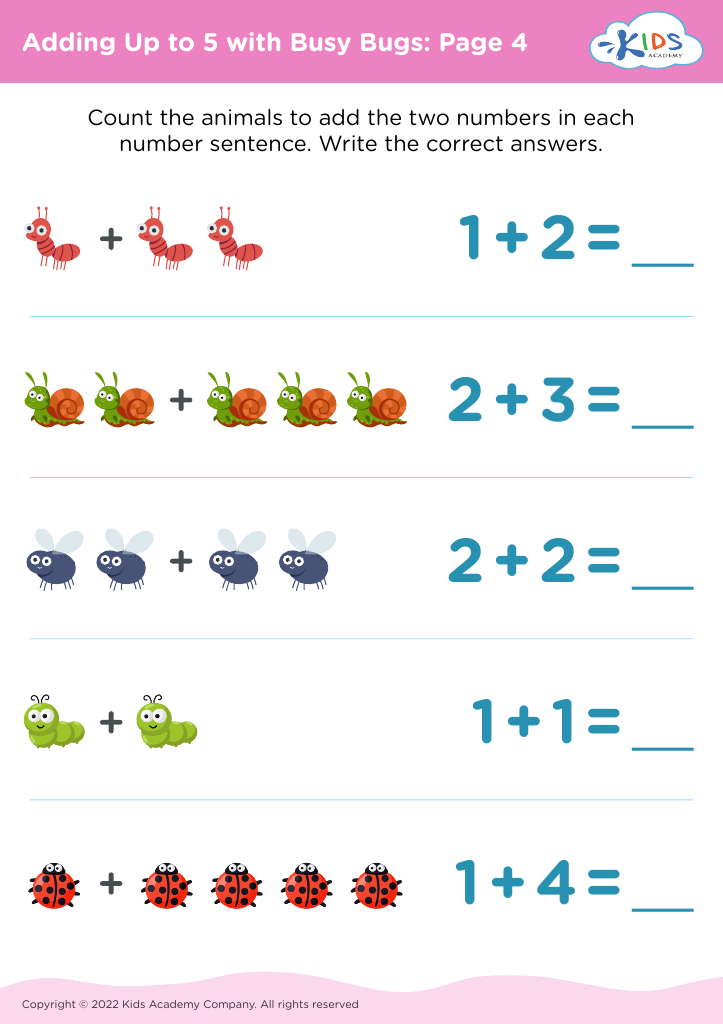
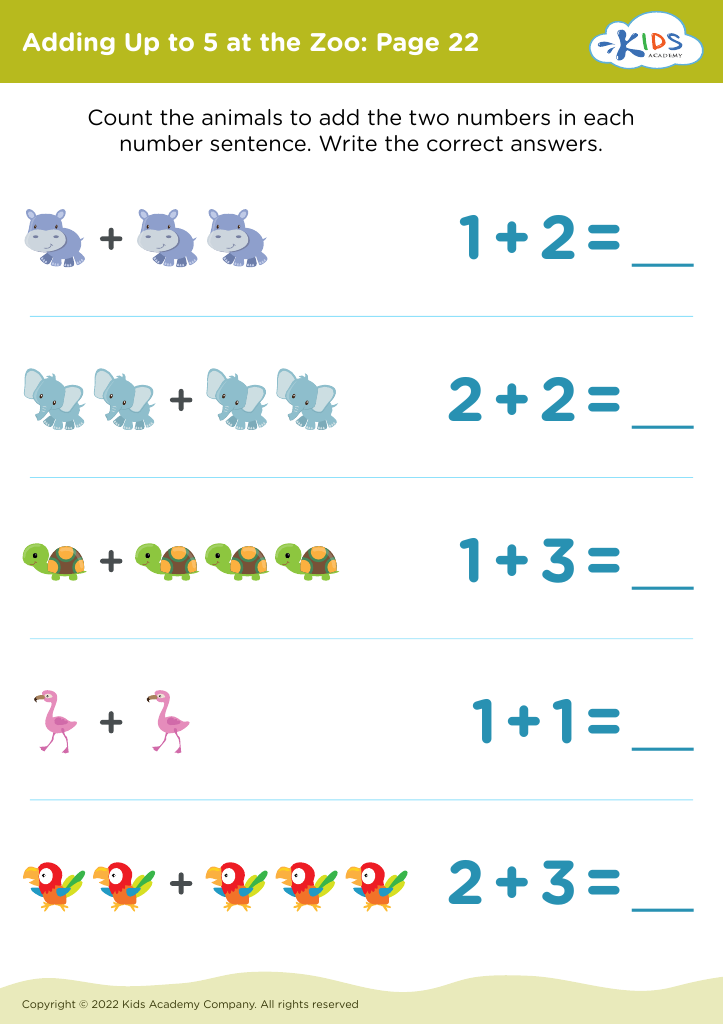
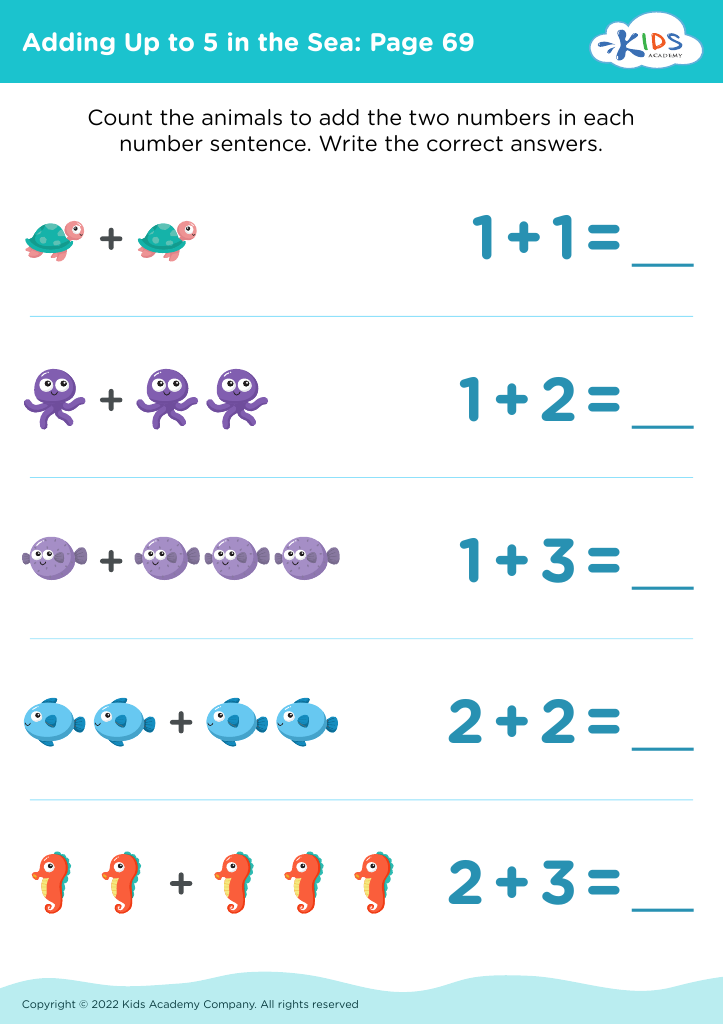
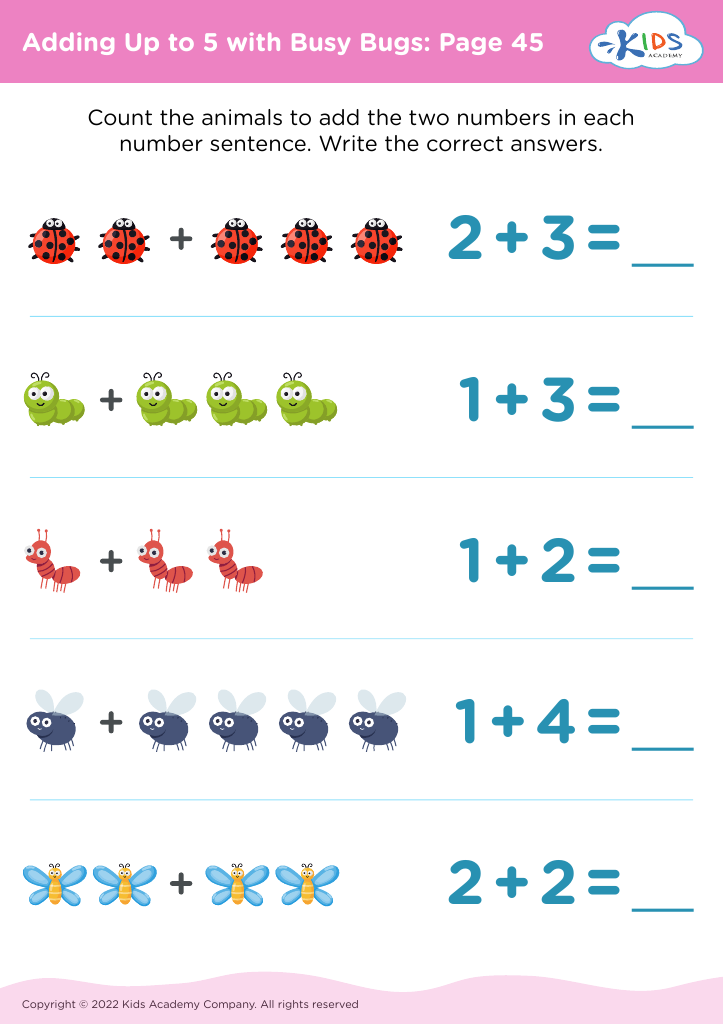
 Assign to My Students
Assign to My Students
